KITES IN THE FIELD
Photographs by Simon Bond
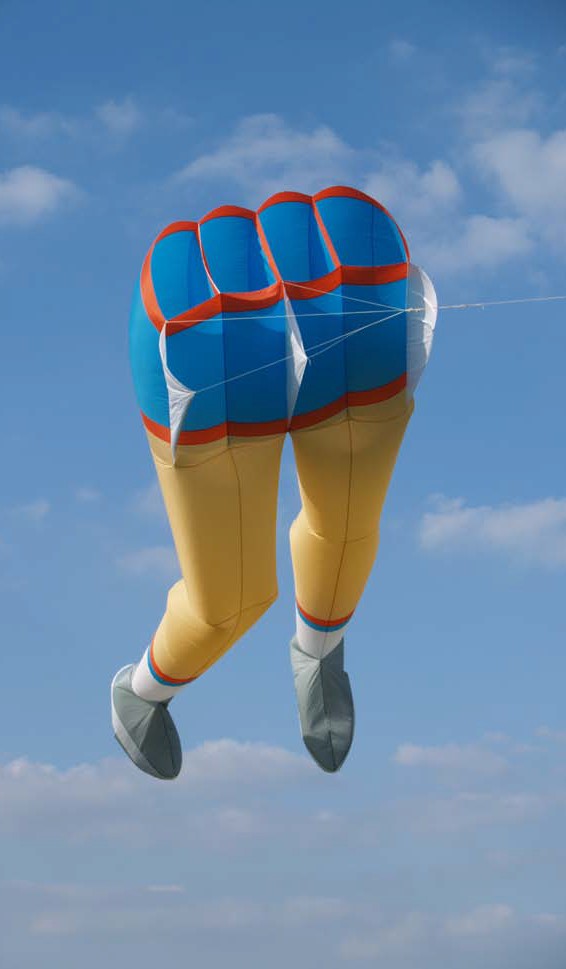
Simon Bond. Easy to spot across the field and always humorous, the classic “Legs” kite created and flown by Martin Lester at the Bristol Kite Festival.
Although kites are found on nearly every continent on earth, many countries’ kite traditions have been poorly documented. It is part of the Drachen Foundation’s mission to help research, document, and explore the kite world.
For that reason Drachen has sent me into the field, whether to remote parts of the globe or to historic kite events, to record what I see. I have been to kite museums and festivals around the world, documenting, filming, and photographing.
Traveling is only part of the job – the majority of my work has been in the office, archiving, preserving, and photographing kites and kite- related artifacts in controlled environments.
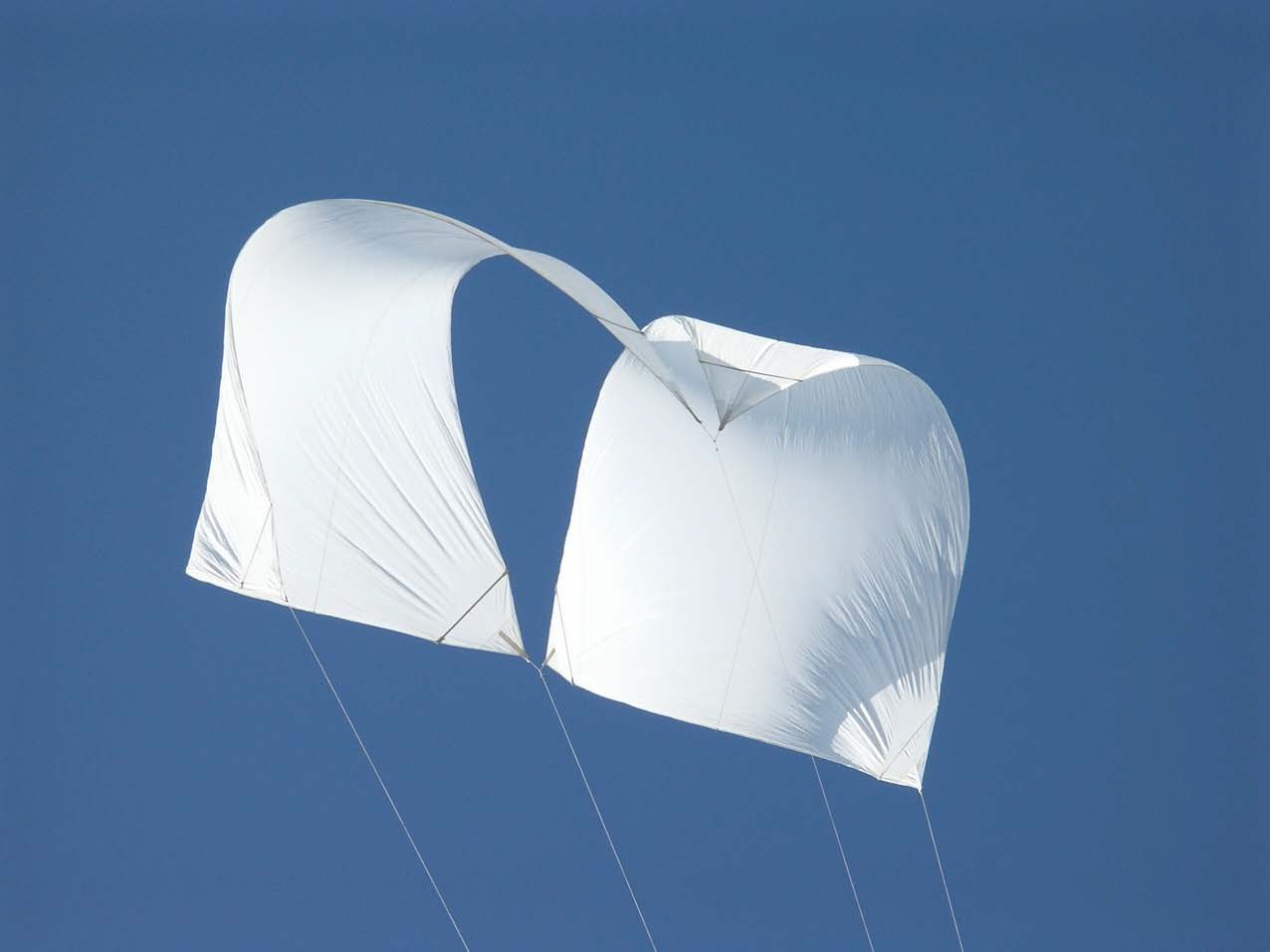
Simon Bond. One of the most beautiful and minimalist kites I’ve seen, made by French duo Emmanuelle and Philippe Simmonet. Seen here at the Long Beach Kite Festival in Washington State.
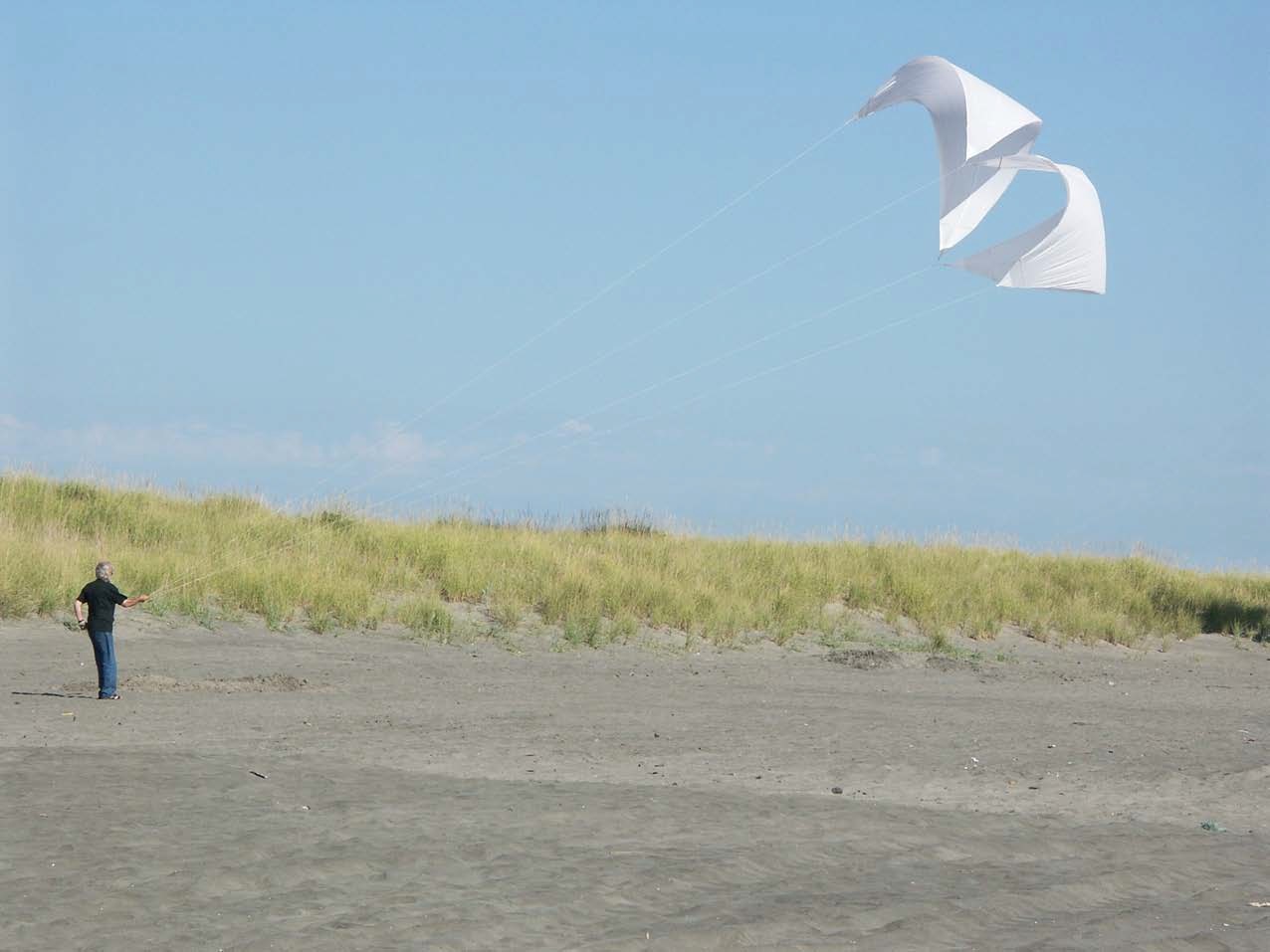
Simon Bond. Wide angle shot of the white kite, with Philippe on the left adjusting the kite-lines. The kite is anchored further down the beach.
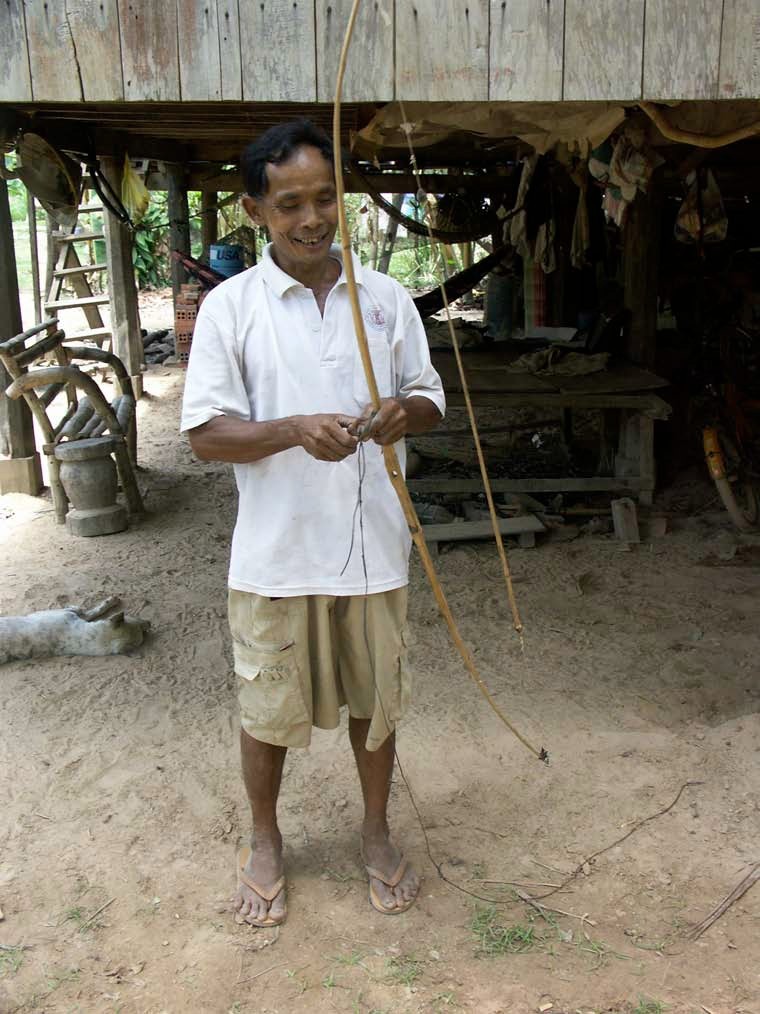
Simon Bond. On the road to the ancient city of Angkor in Cambodia, I visited a kite maker named Kong Chhonn who owned a rare fifty year old Ek (a reed that attaches to the top of traditional Cambodian kites to make noise while flying). Standing in front of his house, the kite maker showed me an Ek reed of his own creation, and later demonstrated how it worked by whirling it through the air. The Cambodian kite tradition was almost destroyed by the Khmer Rouge, which makes it very important for kite makers like Kong Chhonn to pass on their knowledge.

Simon Bond. I spent several days documenting kites in a kite museum in Phnom Penh, Cambodia. Working in the kite museum, Sareth Roeung painstakingly paints depictions of Angkor Wat onto small children’s kites that were later shipped to the Drachen Foundation. While painting Cambodian kites is not traditional, it is quickly gaining popularity as kite makers experiment with new materials and techniques.
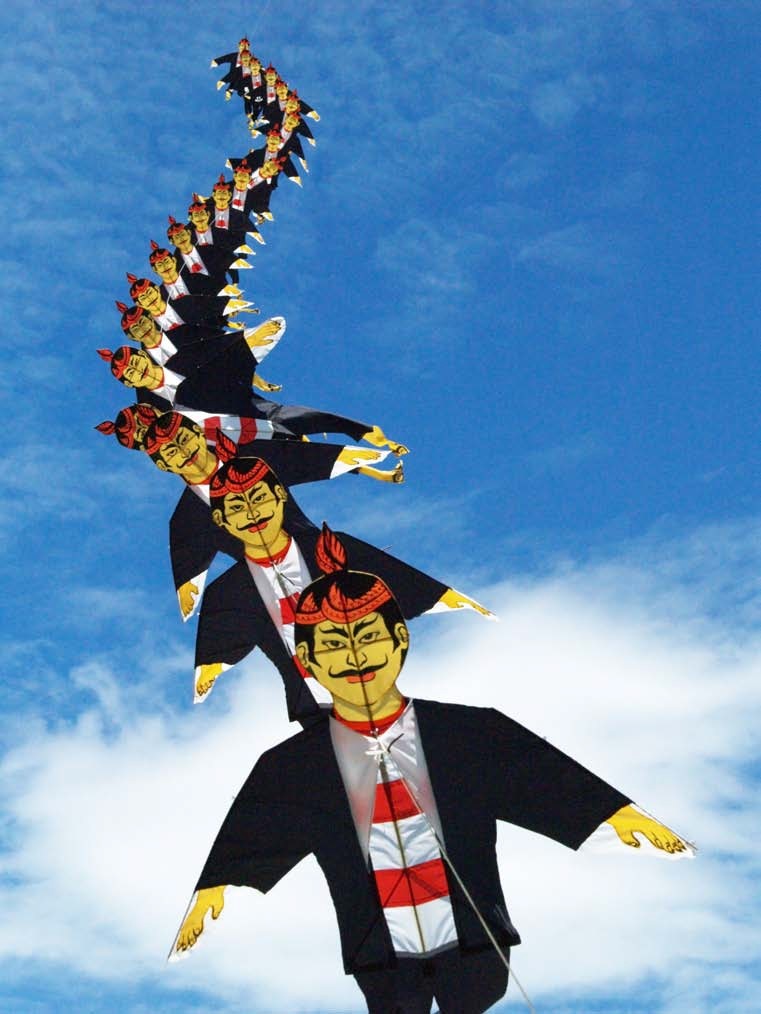
Simon Bond. In the remote city of Bintulu, Malaysia, an international kite festival is held every year, helping to bring this developing country into the modern world. Combining the old with the new, this modern kite train is made up of traditional Malaysian figures.

Simon Bond. At the Bintulu kite festival, the Drachen team arrives (unexpectedly, it seems) to represent the USA. Foundation Executive Director Ali Fujino (left) and Mark Wiener (right) stand with a makeshift sign.
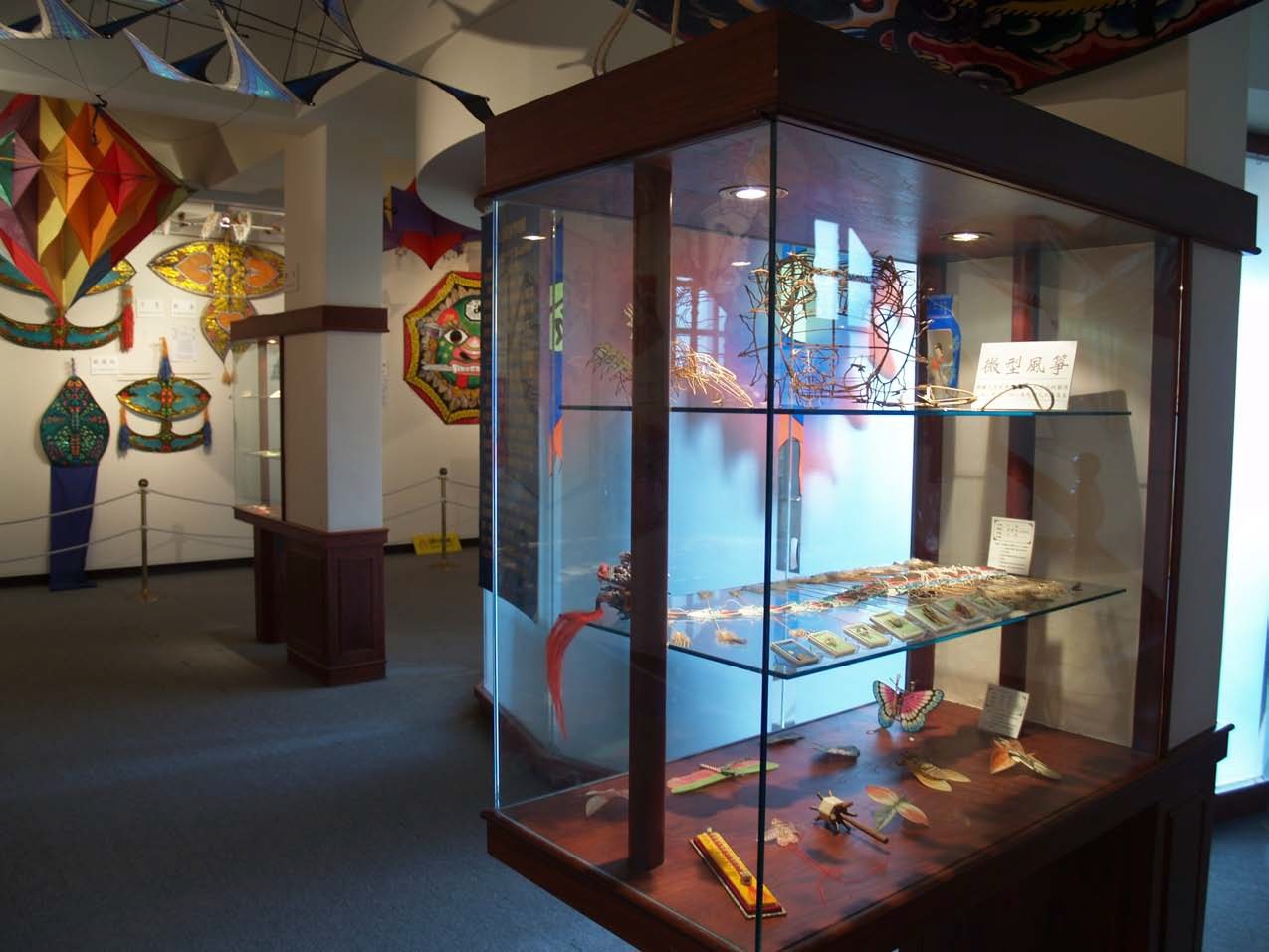
Simon Bond. A charming kite museum I visited in the old mountain town of Chiu-Fen, Taiwan. Another part of the museum houses an amazing collection of Chinese kites. The man who created the museum as his hobby runs a quaint bed and breakfast in the top two floors of the building.

Simon Bond. In the foreground, Joe Hadzicki flies his invention, the “Rev” quad line kite, with many others in unison. For the twentieth anniversary of the Rev, avid kiters met up for the Bristol Kite Festival in Bristol, England to pull off the largest ever organized mass flying of quad line kites. The Rev kite is the only four line kite that has the stability and control necessary for maneuvering many kites in unison without becoming hopelessly tangled.
EDITOR’S NOTE: Join 100 Rev fliers at the Long Beach International Kite Festival on August 19th, 20th, and 21st as they attempt a “mega” fly! Visit the Drachen Foundation calendar online for more info: http://www.drachen.org/calendar.html
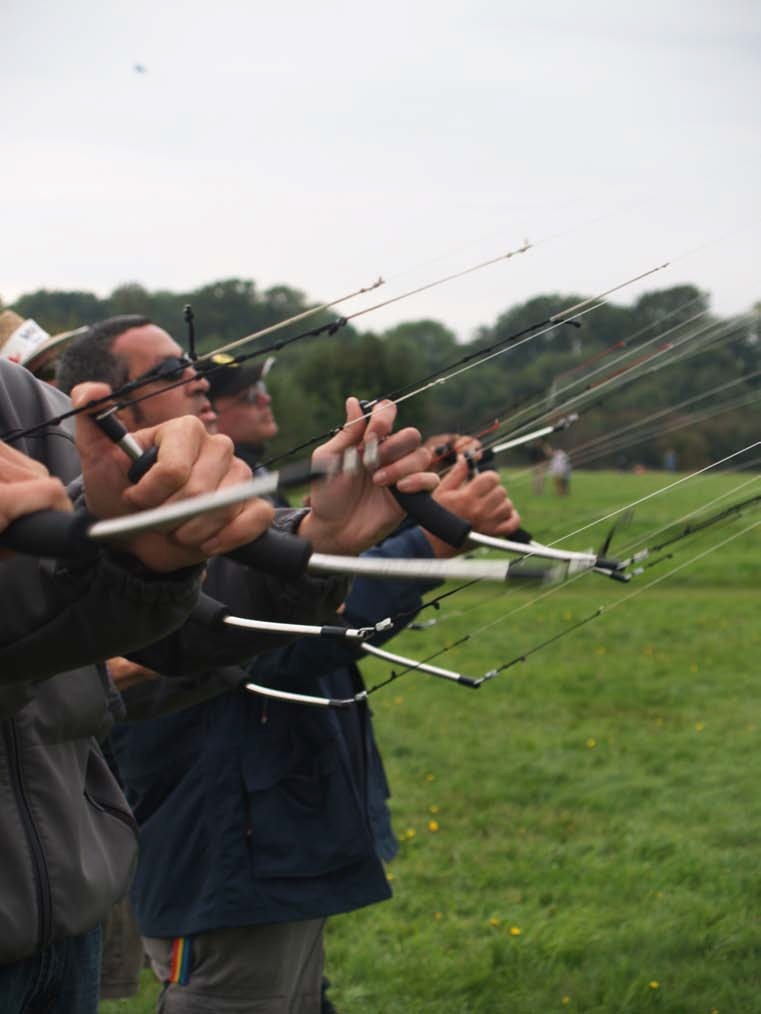
Simon Bond. A mass of kitelines controlled by the skilled hands of team iQuad. It is amazing to see in person how these quad-line kites are orchestrated like marionettes.

